Territori fragili in Lombardia tra abbandono, sottoutilizzo e trasformazioni del patrimonio costruito
Abstract
Pur essendo tra le Regioni economicamente più dinamiche d’Europa, anche in Lombardia sono state individuate zone caratterizzate da perifericità territoriale, comprese per questo nel perimetro delle cosiddette Aree Interne. Il contributo presentato intende analizzare gli effetti che le dinamiche demografiche e socio-economiche hanno avuto sugli assetti insediativi e sul costruito di questi territori, in relazione ai fenomeni in atto. Dopo un primo inquadramento bibliografico che ricostruisce i precedenti storici delle Aree Interne nel XX secolo, lo scritto si concentra su tre casi studio, diversi per ubicazione, storia e cultura degli insediamenti: l’alto Oltrepò pavese, l’alta val Brembana e l’alto Lario occidentale. In questi territori la fase di ricerca sul campo ha mostrato come gli effetti del decremento demografico possano non coincidere con l’abbandono totale degli edifici. Nella zona appenninica dell’Oltrepò e nell’area delle Alpi Orobie le nuove dinamiche di proprietà e di uso, soprattutto con finalità turistiche, hanno indotto fenomeni di sotto-utilizzo del costruito, di contro al fatto che molte abitazioni appaiano, invece, ‘rinnovate’: lo spoglio delle pratiche edilizie negli archivi comunali ha, infatti, confermato come gli edifici della tradizione siano stati profondamente trasformati dagli interventi degli ultimi quarant’anni. Nell’area dell’Alto Lario Occidentale, al contrario, la debole dinamica edilizia ha permesso di osservare meno trasformazioni, non per questo non invasive, insieme a fenomeni di abbandono, degrado e crolli.
Fragile Areas in Lombardy Among Abandonment, Underutilization and Transformation of Built Heritage
Although Lombardy is one of the most economically dynamic regions of Europe, it also presents areas characterized by territorial periphery, hence included in the boundary of the so-called Inner Areas. The paper presented intends to analyse the effects that demographic and socio-economic dynamics have had on the settlement structures and on buildings of these territories, linked to the ongoing phenomena. After a first bibliographic overview on the historical precedents of the Inner Areas, the research focuses on three case studies, different in location, history and culture of the settlements: Alto Oltrepò pavese, Alta Val Brembana and Alto Lario Occidentale. The field research phase shows that the effects of the demographic decrease may not coincide with the total abandonment of the building. In the territory of the Oltrepò Pavese and that of the Orobie Alps the new dynamics of ownership and use, used for tourism, have induced phenomena of partial use and under-use of the buildings. The houses often appear renovated: research in the municipality archives, in fact, has confirmed that the traditional construction has been profoundly changed by modernization interventions over the last forty years. In the area of Alto Lario Occidentale, on the contrary, the weak building dynamics allowed to observe fewer transformations, sometimes invasive, but also phenomena of abandonment, degradation and collapse.
Parole chiave
Full Text
PDFDOI: https://doi.org/10.14633/AHR238
Refback
- Non ci sono refbacks, per ora.
Copyright (c) 2020 Benedetta Silva; Carolina Di Biase, Mariacristina Giambruno

This work is licensed under a Creative Commons Attribution-NonCommercial 4.0 International License.
........................................................................................................................................................................................................................................................................................................................................................
ArcHistoR è una rivista open access e peer reviewed (double blind), di Storia dell’architettura e Restauro, pubblicata dall’Università Mediterranea di Reggio Calabria. La rivista ha cadenza semestrale. È una rivista di Classe A (ANVUR) per l’Area 08 - Ingegneria civile ed Architettura, settori C1, D1, E1, E2, F1.
Comitato scientifico internazionale
Maria Dolores Antigüedad del Castillo-Olivares (Universidad Nacional de Educación a Distancia de España), Monica Butzek (Kunsthistorisches Institut in Florenz), Jean-François Cabestan (Université Paris 1 - Panthéon Sorbonne), Alicia Cámara Muñoz (Universidad Nacional de Educación a Distancia de España), David Friedman (Massachussets Institute of Technology), Alexandre Gady (Université Paris-IV-Sorbonne), Jörg Garms (Universität Wien), Miles Glenndinning (Scottish Centre for Conservation Studies, University of Edinburgh), Mark Wilson Jones (University of Bath), Loughlin Kealy (University College Dublin), Paulo Lourenço (Department of Civil Engineering, University of Minho), David Marshall (University of Melbourne), Werner Oechslin (ETH, Zurich, Stiftung Bibliothek Werner Oechslin, Einsiedeln), José Luis Sancho (Dirección de Conservación de Bienes Histórico-Artísticos, Palacio Real, Madrid), Dmitrij O. Švidkovskij (Moscow Architectural Institute, MARCHI)
Comitato direttivo
Tommaso Manfredi (direttore responsabile), Giuseppina Scamardì (direttore editoriale), Antonello Alici, Salvatore Di Liello, Fabrizio Di Marco, Paolo Faccio, Mariacristina Giambruno, Bruno Mussari, Annunziata Maria Oteri, Francesca Passalacqua, Edoardo Piccoli, Renata Prescia, Nino Sulfaro, Fabio Todesco, Guglielmo Villa
........................................................................................................................................................................................................................................................................................................................................................
Laboratorio CROSS. Storia dell'architettura e Restauro

ISSN 2384-8898

This work is licensed under a Creative Commons Attribution-NonCommercial 2.0 Generic License.

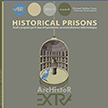
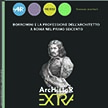
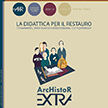

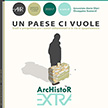
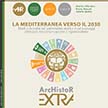
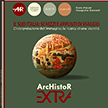
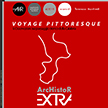
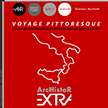
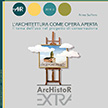
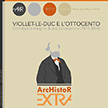

_2.jpg)



